We are a full-service digital branding agency specializing in Product Design, Mobile App Design, Web Design, Graphic Design and Brand Identity Design Services. Weare one of the best UI UX design agencies as we deliver a project that not onlychallenges our creativity but demands for out of box thinking. We work with our clients to identify business objectives, create strategies and implement them with a range of digital, design, advertising, branding and marketing projects.
Don't wanna be here? Send us removal request.
Text
The Top Three UX Trends Of 2019
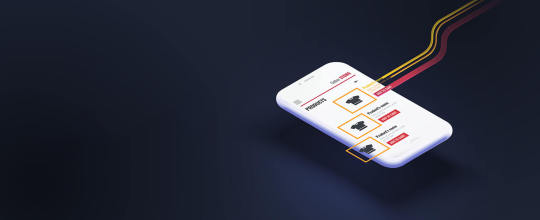
In this article, we will unveil the UX trends of 2019, Even though we have whole exhaustive trends that are out there. We have focused on the top three trends that might revolutionize the space.

Technology is evolving at a rapid pace, To keep up with the paradigm shift there is a need for the user experience industry to evolve. The user experience is more important than ever and has become the driving factor of how consumers interact with web applications, mobile applications, and wearable devices. For example, the wearable devices based on the Internet of things, voice-over devices like Alexa, Echo dot there is a drastic change in which the consumers are searching the web. In a similar fashion the consumer's interactions with these tech devices, applications have changed and If consumers do not find for the experience of what they are looking for they will go elsewhere. Hence there is a need for user experience adoption. Let's take a peek at these top UX trends of 2019 that are shaping the present and future.
1.Storytelling:
One of the oldest and still widely followed UX trends is storyboarding. Everybody remembers a good story, there is a scientific reason behind it. when a good story is heard or read then the human brain releases a hormone known as oxytocin. This hormone tends to increase the feelings like trust, compassion, and empathy that motivates humans to cultivate social behavior. “You are never going to kill storytelling because it’s built-in the human plan. We come with it. '' - Margaret Atwood. The designer might use various techniques like user research in crafting personas, user scenarios, user journey maps to help teams understand the customer interaction but the vocabulary used to describe these might convey different meanings to different personnel and create a gap, so through the story is used to persuade, inspire, motivate, empathize and understand the problem being solved at hand. Storytelling is not a mere technique used by designers to document users' problems but a powerful tool that helps various teams like designers, product managers, developers in understanding user’s problems and this understanding drives successful solutions. youtubeembedcode.com/nl/add-Link-exchangeyoutubeembedcode.com/nl/check this out
2. Voice Recognition Technology:
The foray of technology advancement into voice recognition and devices like Amazon dot, Google Echo gaining popularity the design enthusiasts are quick to declare that there is a need to reinvent design principles and methods that are appropriate to the voice technology. But does the shift from visual to the auditory output means that design rules must be changed? The people who are using haven’t changed and gestalt or usability principles are more to do with human behavior and interaction than that of technology. A designer must continue to combine voice and graphical user interface for an immersive experience. The combination of these two can be transformative, it becomes much more than a human using the device. youtubeembedcode deadd-link-exchange
3. AI Technology:
How are machine learning, chatbots, artificial technologies going to affect the design process? User experience powered by artificial intelligence are being popped up, it won't take much time to be the new norm of the design revolution. AI systems have the ability to analyze large amounts of data quickly, learn and adapt their behavior in real-time. This system can infer from the context which the user will be supplying information about questions, metadata, and various business rules. As a designer works through each design phase to build a great user experience, the designer can constantly refine questions that will change the way this system analyses the data. Each time this designer feeds questions to the AI systems, they analyze the data and throw up the best possible answer which helps in making the designs better. UX is not only necessarily about leveraging data insights to make an experience that users are expecting. AI connects the dots by infusing intelligence along with UX in enhancing the content reachability and findability. I hope this article has given the top three UX trends to look out for in the year 2019. What are your views on the UX design trends of 2019? We would love to see what you think in the comments section! I wish you like to explore the design trends of 2020 which we have published at the start of this year and wondering about the next big thing of the user experience industry, check out to explore more. Follow my blog with Bloglovin Read the full article
#2019ui/uxdesigntrendsyoushouldknow#AITechnologydesign#Artificialintelligenceuserexperience#Dataindesign#Design#designagency#latestuxdesigntrends2019#speechrecognitionUX#storytelling#TopUXtrendsof2019#trendsuxdesign2019#UIDesign#userexperiencetrends#UX#uxdesigntrendsfor2019#UXtrends#uxtrends2019medium#uxtrendsfor2019#uxtrendsin2019#UXD#VoiceRecognitiondesign
0 notes
Text
How Not Knowing UX Roles Makes You A Rookie

User Experience is a very broad term which permeates the confusion not only to ux job titles but the entire profession itself. There are many dimensions to a career in the user experience industry, So it's imperative one should have a fair understanding of ux roles and their repsonsbilities. Each of UX role is deeply rooted in user empathy which helps the designer to shape up those experiences. The Design and Experience are two very misunderstood terms within this closed circle due to the astounding number of job titles that are ambiguous, unclear and overlapping and are sometimes meaningless. If you are a user experience design enthusiast and have done a quick job search the odds are you have come across a variety of job titles, a description that is as simple as “User Experience Designer”.

How not knowing different UX Roles makes you a rookie while seeking a job in UX. In this article, I will steer you through different ux job titles and responsbilities that are available in the market and in turn shall help you decide which specialization of UX fits for your interest and skill set.
UX Designer:
The most general or widely accepted job title in the industry is UX Designer, It usually means these people are involved in researching, prototypes, user testing, strategy. UX Designer thinks from business requirements either coming from the marketing teams or business teams and product owners. They need to care about the users they test their prototype with and obviously, they are the ones creating prototypes. They will be working on desktop software, web application, and various other cloud solutions and so their skill set is very broad and differs from company to company and teams to teams.
UI Designer:
UI designers are the ones who will be working particularly on screens, screen interactions across various devices viz-a-viz desktop, tablet, and mobile of different sizes and shapes. The UI design is a combination of visual design with user interfaces. They will also be working with color palette, Typography and layout everything that relates to visual designs. Many UI Designers also have UX Skills, sometimes they will be working on UX architecture and usability testing. A few of the job roles offered in the market are UI/UX Designer which means they are typically involved in both UI and UX design but most times it means visual design so as not to isolate UX design.
Interaction Designer:
A slightly less common job title in the Industry is an Interaction Designer or IXD. Often people like this have a traditional background of human-computer interaction. They know a lot about ergonomics, usability or all about the user interactions with a program or website on different devices. They will be optimizing the interface to be as much as usable on desktop as on mobile devices. They would do a lot of usability testing to find issues or see which tasks take a lot of time to optimize the interaction. They focus on all of the small interactions on the whole flow of users using the application so that experience is consistent and usability remains across all of the devices. For Example, when you open a youtube in the desktop application, the functionality and the way you interact with it remain the same as on a tablet.
User Researcher:
Research is an important process of any design project, The people who do the process of user research are termed as User Researcher or UX Researcher or Design Research depending on the focus of their work. They usually focus on being an advocate for the user in any company. They conduct user interviews, write surveys, work with analytical data and conduct workshops to report all the insights they have uncovered as a part of the research process. Many design-centric companies have these roles to share the load between UX Designers and UX Researchers so that each one of them can focus on their domains viz-a-viz design and research respectively. User research would spend typically the first couple of weeks in a project on research by visiting the field, understanding the actual client's problem and then create reports to be handed over to UX designers to solve a design problem. For Example, A user researcher working on a banking project would goto bank and interview bank employees, customers and try to understand their problem and relate to the main design problem which the team is tackling.
Information Architect:
There are a lot of companies that have nested structures of information on their website and they need somebody to help them design the ways of this information to be searched for and browsed. The information architect is the people who are specialized in designing aspects to organize the content on the website in a structured manner for users to easily browse through and search for. For Example in an eCommerce company like Amazon, Information Architect work on categories like how the products are organized into categories, sub-categories, how can a user search for this information easily and what information is crucial to find. Sometimes they have a traditional background and few people who work as UX designers transition to the Information Architect role due to their self-interest.
Content Designer:
the content designer is the role who is responsible for designing the content structure. They are not only responsible for organizing different pieces of content together but also work on a particular piece of information that might have text, image, and video to make them intuitive, organized and readable. These people share similar competencies to that of traditional UX designer but these folks focus mostly on making the content understandable for the common users. For Example in a diverse society like the USA, UK, and India where citizens are not proficient in English, The government service website should have content very much intuitive, clear and simple plain English. Content designers help to take care of such actions whenever new content is added, modified to test all over again.
Summary
In general, all UX designers work in two kinds of environments i.e Agency side and In house UX teams. What might work for some people might work for other people and it’s up to each such individual to choose the role that best suits their mindset and skill set. We hope this article has given you some interesting insights into different kind of UX roles which are currently popular in the UX design industry. Read the full article
#Design#designagency#designer#graphicdesigner#informationarchitect#uidesigner#usabilitytester#userresearcher#uxdesigner#uxuidesigner#visualdesigner
0 notes
Text
Product Design Is The Next Big Thing In User Experience

Every now and then I would be encountered with the question, What's the next big in user experience and for which I reply in a word is a "product design". Today, We stand at the juncture of ever-changing user needs and so the technology is rapidly evolving to keep up with the business, user needs. The first computer was invented between 1936 to 38 but Nobody has ever visualized that the technology would grow ten folds within a span of 70 years where people are reaping the benefits of automation like Voice over devices like Alexa and Dot, IoT devices making it possible to complete home automation by phones, Chatbots / virtual assistant answering queries instantly without the need for customer care. With the advent of technological shift, even the interaction with the application of the end-users is changing so there is a growing demand of the usability experts.

The next big thing in user experience is the product design, So what’s really is product design? Product designing is a way of solving a user’s problem, visualizing the user’s problems and bringing a solution. Product design goes through an analytical approach and relies on problem-solving techniques to improve the quality of the interaction of the user with the product and its surroundings. Product design involves various forms of sketching and prototyping to address the problem statement and designing a solution to solve it. The main difference between user experience design and product design from bird view angle is that user experience advocates more about the user whereas product design along with the user focuses on the user interaction with its surroundings. The product design advocates on user needs, business requirements at the organization level. The product design process involves the following phases.
1. Product Discovery:
Once the need for the product is identified, forming an idea is the most critical step involved in the product discovery phase. The discovery phase involves steps for discovering the product. Ideation: These ideas may have originated from a variety of sources which are internal and external to an organization either by Market research, Sales team, marketing, Research & Development teams. Each of these sources gives a different emphasis on the idea of the product. The ideas are then screened and chosen to be conceptualized. Research: Once the product is ideated, Research involves user and market research that lays the basis for great design. To maximize the chances of success it is recommended to conduct the research in a conducive environment bringing to the table data that are insightful for making decisions and reducing wastage.
2. Product Definition:
After thorough research, try to make sense of the data collected from the earlier phase. The aim of the product definition phase is to document the product vision, personas, user journey maps from the data collected and analyzed. Product vision: It describes why the product is being built, how it will help your customers and achieve the strategic goals of an organization.Personas: Personas help teams to understand user’s goals in a specific context and its purpose is to create a reliable and realistic representation of key audience segments.User Journey Maps: A user journey maps are a visual representation of a path taken by the user to accomplish a specific goal. Typically, It’s a series of steps in which the user interacts with a product.
3. Product Design:
This phase is where the product is designed basis for the discovery and definition phase. It is concerned with how the product is made incorporating both form and function. This phase is constituted by information architecture and prototypes. Information Architecture: Information architecture is the structure of the product resulting in the creation of navigation, hierarchies, and categories. This helps the user to see the information grouped in the product where they are. Prototype: A prototype is a visual guide representing a page structure, it’s elements and hierarchy. It forms the backbone of the product design.
4. Product Validation:
The product design that has been resulted through the design phase has to be validated by the actual users through a variety of usability testing techniques. The feedback from the usability testing is iterated to refine the design. Usually, good design leads to product success and a bad design is incrementally iterated to perfect the design which is acceptable by the end-users. In order for the companies to succeed, it is imperative that they launch great products that have a great design. So, the organization has to amend rigorous training to its designer team in imbibing the product thinking approach which results in great product designs that result in the success of their products. Read the full article
#Nextbigthinginux#processofproductdesign#productdesign#productdesigndefinition#productdesignphases#stagesofuxproductdesign#whatisproductdesign
0 notes
Text
User Experience: Expectation vs Reality Demystified

When it comes to user experience, people tend to believe that there are new trends and principles that need to be learned with changing user trends. But that’s not true. Why? Because humans are the same, there is a change in their behaviors and their behavior changes with the change in surroundings. The environment that people live is different, So the way they interact with the environment is different. That being said, the basic design principles shall never change but there may be new trends emerging with the change in user’s behavior.

How the User Experience is really perceived in society? Here are expectations and realities from different perspectives that we may encounter in our day to day life. Read on to discover these interesting facts which you might relate to your personal experiences.
Hiring Manager perspective
Expectations: In my experience, The hiring manager recruits a UX designer who is proficient in the design methodologies, principles, and tools. They expect user experience designers are skilled professionals who are specialized in drawing the user-centric designs that will be accepted by end-users. Companies also think these specialists know the kind of design techniques and methods to be applied for the type of project they are working on. They also assume designers are conscious about the time frame to deliver a project. Moreover, the stakeholders have their own objectives which are formulated by keeping the entire product life cycle in mind. Reality: The designers might not have enough resources allocated by the stakeholder to go through the entire design process for a project. In reality, a designer has to do one or all of the following to meet the expectation of a hiring manager. Ask Right Question: A designer should be able to understand the project goals and objectives during the project kick-off meeting by asking the right question so as to start designing at the earliest.Be Independent: Since the stakeholders are generally occupied in other aspects apart from the design phase, A designer has to solve problems independently with the minimum inputs or supervision from a stakeholder.Create Attractive Visuals: The inputs from the Kick-off meeting shall drive the designer in creating visuals, They shall not have time to experiment and apply the right approach in creating attractive visual so it’s always best to use known to practice to bring the value.
User Experience Designer perspective
Expectations: A user experience designer wants to get hired by a company that respects the UX process in its entirety. He/ she also wants to apply all the UX principles, methods or techniques they have acquired from a design course or from previous project implementation that will get the desired outcome. Reality: sooner or later, the designer realizes that they do not have enough time to implement the right methods and principles in deriving the desired outcome. They are on the constant knack from their team manager/stakeholders or clients to deliver the designs at the earliest possible opportunity.
Clients Stakeholder Perspective
Expectations: Most of the clients are under the impression or at least expect User Experience will solve business problems which are not true at all, Building the right features that meet the goals of business objectives solve business problems. The clients also expect that User Experience is all about making their product look great by building great attractive visuals which is not completely accurate. The clients are generally business people who have a business mindset and expect the products that are being designed to be shipped quickly to the market for them to be sold. Clients also expect that a better-designed product is the ones that are widely accepted in the user community. Reality: User Experience is a resulting intersection of solving business problems combined with user problems. A designer while working on a problem gather business objective during a kick-off meeting which is a trigger for creating further designs and prototypes. In the design phase, the designer actually tries to meet the user goals combined with a business goal and at the same creating intuitive designs that have great look and feel. Due to the time constraint in shipping products to market, Designer might not Brainstorm, do workshops, get insights from the actual users to build a design that is actually accepted by the actual users. However, the designer perfects their design when the product hits the market, get feedback from users and iterate their design to be successful in the market. The designer would rather sit and discuss fictional visions in a meeting room, once they got and test the designs in the real world, Live the life of a user to see what clearly to be improved or added cannot make products that are widely accepted.
End-Users Perspective
Expectation: End-Users of a product expect that great looking product is easy to use, easy to navigate and can easily find information for what they are looking for without much product knowledge. End-users also expect the product to interact with them to suggest what to do next. Reality: Actually greatly designed product/application may look great in terms of look and feel but may not necessarily great user-centric product/application. The difference can be made from the example of the Airbnb website which is no doubt a great product. The user can find for the Homestay basing on the location, type, budget with no many clicks. To conclude, The User Experience: Expectations and Reality check varies from person to person. The influencing factors can be attributed to the type of application be it a mobile app, product, web application and type of working environment of a UX designer may be designed agency or in house organization. Read the full article
#basicsofux#designexpectations#expectationversusrealityinUX#expectationversusrealityofUXDesigner#expectationversusrealityuserexperience#expectationversusrealityux#expectationvsreality#userexperiencevsproductdesign#uxblog#uxdesign#uxdesignerexpectations
0 notes
Text
9 Proven Ways To Increase Customer Engagement On Your Website

In Today’s Digital era, Any online business owner's main focus is to increase customer engagements on your website!

Any business to succeed the important contributing factor is sales, So how does a sale happen? Sales happen when a customer is interested in the product or services you are offering on your website. The two most important things from a sales perspective are Customer Acquisition Customer Retention When users visit your website they should appreciate your content enough for them to stay on the website, absorb and convert. They will spend more time on your website only when they are engaged through various forms of interaction i.e. ease of use and navigation, appealing content that caters to your audience and speed at which interaction takes place. If the user is engaged, the chance of user becoming your customer is high. After a successful acquisition of a customer, it’s your responsibility to understand his needs and engaging him enough so that he/she is retained and becomes a loyal customer. A loyal customer always promotes your product or service through word of mouth that brings in more business and eventually more business contributes to your revenue, growth. With the explosion of the internet, Business has evolved from brick and mortar to online means. Likewise, the customers have a lot of options to choose from through searchability and accessibility of the internet. It’s the duty of a business to keep the visitors of your website engagement which directly contributes to the growth and sales of your product/service. This article outlines 9 proven ways to increase customer engagements on your website. 1. Website speed: According to Machmetrics survey, the average load speed of the website varies from 8-11 seconds. So does the speed of your website matter? Yes, Google and other search engines penalize your website for being slow and so does the users. As per one research conducted by Google, the average speed of your website should be under 3 second and if not your users leave your website and may not return back. A few techniques that might help you to increase your website speed are. Image compression Enabling browser cacheUsing the content delivery technique 2. Blogs: One of the most proven and effective ways of engaging with your customers are Blogs, They are the means of educating your customers about your product or services. You can share case studies of your product/service that helped to solve their problem. According to the Content Marketing Institute, 77 percent of Internet users read blogs and small business get 126 percent lead growth as they tend to increase the trust among your customers or audience. The combination of eye-catching phrases and images in your blogs drives more traffic to your website. 3. Linking content: The better the quality of content your website has, the longer you tend to keep your customer and the longer you keep the customer engaged, the chances of conversion are more. Try linking your content as much as possible and try not to overdo it. In your article, try linking your product/service detail pages. The second way showing the related posts, trending posts in a place where it would attract the attention of the reader. 4. Social Media Postings: Due to the penetration of the internet in far fetched places, people became very active in various social media channels like Facebook, Twitter, Instagram, YouTube, Linkedin, Pinterest. Make it a habit to publish posts at regular intervals on these platforms for keeping users engaged by your brand and keep an eye on how your product/service being performed in terms of reception through social media platforms. 5. Loyalty programs: Loyalty programs tend to exist for a long time for rewarding their loyal customers. Any customers love to get rewarded for their engagement with a company or brand. The typical example of this kind of program is the credit card companies offering reward points for customer monthly spend and loyalty. On the accumulation of enough reward points, a customer can place an order from a wide variety of categories ranging from shopping vouchers to ordering a recent electronic gadget. Similar programs are offered by e-commerce websites to keep them returning to their website which would increase the spending habits of a customer and at the same time loyal to them. 6. Discounts: Offering discounts in one great way of engaging with the customers. It’s the mindset of a customer whether it’s existing or new to buy a product/service at a lower value than its original. Companies giving huge discounts on various occasions like New Year sales, Independence day sale or Thanksgiving sale not increase their sales but also a way to give away old stock. 7. Customer Reviews: Customer writing online reviews is proposed to have a positive impact on new customer engagements. You must try to offer incentives for new customer reviews for their time, dangling the carrot of reward might tend to increase the number of positive customer reviews of your product/service being offered. Try to feedback for all the reviews tend to increase the trust factor of your would-be customers and in turn conversions. 8. Community Forums: One of the best ways to interact with your product/service with your customers is through community forums. To increase engagement, increase the number of platforms to interact with your customers like Facebook, Instagram, etc. This would decrease the cost of building and maintaining community forums on your website. These forums tend to increase the customer to customer interaction thereby sharing each other's knowledge of product/service is benefitting them. 9. Chat Bot: Add a chatbot to the home page of the website can have all your customer’s questions answered in real-time. The customers do not have to wait for an email or phone call thereby increasing their satisfaction. The ability to engage with your customers in real-time makes the chat a valuable customer support tool. Conclusion: We have covered 9 effective ways of boosting user engagements to your website. Many of the ways are often are easy to implement and are overlooked. Having a website that is faster, easy to navigate and easy to use to keep your user engaged. As there is a saying in Digital Marketing "Content is king", producing great content is also important for keeping your users engaged so as to increase longevity. Finally, our utmost goals are to keep users as long as on the website to take the desired action - Subscribe for a service/product, Contacting us, Newsletter signup. Read the full article
#brandengagementactivities#clientengagementactivities#customerengagementmodel#customerengagementplan#customerengagementprocessflow#customerengagementstrategypresentation#customerexperiencestrategy#engagementmarketing#engagementstrategies#goodexamplesofcustomerengagement#userengagement#whyiscustomerengagementimportant
0 notes
Text
9 Proven Ways To Increase Customer Engagement On Your Website

In Today’s Digital era, Any online business owner's main focus is to increase customer engagements on your website!

Any business to succeed the important contributing factor is sales, So how does a sale happen? Sales happen when a customer is interested in the product or services you are offering on your website. The two most important things from a sales perspective are Customer Acquisition Customer Retention When users visit your website they should appreciate your content enough for them to stay on the website, absorb and convert. They will spend more time on your website only when they are engaged through various forms of interaction i.e. ease of use and navigation, appealing content that caters to your audience and speed at which interaction takes place. If the user is engaged, the chance of user becoming your customer is high. After a successful acquisition of a customer, it’s your responsibility to understand his needs and engaging him enough so that he/she is retained and becomes a loyal customer. A loyal customer always promotes your product or service through word of mouth that brings in more business and eventually more business contributes to your revenue, growth. With the explosion of the internet, Business has evolved from brick and mortar to online means. Likewise, the customers have a lot of options to choose from through searchability and accessibility of the internet. It’s the duty of a business to keep the visitors of your website engagement which directly contributes to the growth and sales of your product/service. This article outlines 9 proven ways to increase customer engagements on your website. 1. Website speed: According to Machmetrics survey, the average load speed of the website varies from 8-11 seconds. So does the speed of your website matter? Yes, Google and other search engines penalize your website for being slow and so does the users. As per one research conducted by Google, the average speed of your website should be under 3 second and if not your users leave your website and may not return back. A few techniques that might help you to increase your website speed are. Image compression Enabling browser cacheUsing the content delivery technique 2. Blogs: One of the most proven and effective ways of engaging with your customers are Blogs, They are the means of educating your customers about your product or services. You can share case studies of your product/service that helped to solve their problem. According to the Content Marketing Institute, 77 percent of Internet users read blogs and small business get 126 percent lead growth as they tend to increase the trust among your customers or audience. The combination of eye-catching phrases and images in your blogs drives more traffic to your website. 3. Linking content: The better the quality of content your website has, the longer you tend to keep your customer and the longer you keep the customer engaged, the chances of conversion are more. Try linking your content as much as possible and try not to overdo it. In your article, try linking your product/service detail pages. The second way showing the related posts, trending posts in a place where it would attract the attention of the reader. 4. Social Media Postings: Due to the penetration of the internet in far fetched places, people became very active in various social media channels like Facebook, Twitter, Instagram, YouTube, Linkedin, Pinterest. Make it a habit to publish posts at regular intervals on these platforms for keeping users engaged by your brand and keep an eye on how your product/service being performed in terms of reception through social media platforms. 5. Loyalty programs: Loyalty programs tend to exist for a long time for rewarding their loyal customers. Any customers love to get rewarded for their engagement with a company or brand. The typical example of this kind of program is the credit card companies offering reward points for customer monthly spend and loyalty. On the accumulation of enough reward points, a customer can place an order from a wide variety of categories ranging from shopping vouchers to ordering a recent electronic gadget. Similar programs are offered by e-commerce websites to keep them returning to their website which would increase the spending habits of a customer and at the same time loyal to them. 6. Discounts: Offering discounts in one great way of engaging with the customers. It’s the mindset of a customer whether it’s existing or new to buy a product/service at a lower value than its original. Companies giving huge discounts on various occasions like New Year sales, Independence day sale or Thanksgiving sale not increase their sales but also a way to give away old stock. 7. Customer Reviews: Customer writing online reviews is proposed to have a positive impact on new customer engagements. You must try to offer incentives for new customer reviews for their time, dangling the carrot of reward might tend to increase the number of positive customer reviews of your product/service being offered. Try to feedback for all the reviews tend to increase the trust factor of your would-be customers and in turn conversions. 8. Community Forums: One of the best ways to interact with your product/service with your customers is through community forums. To increase engagement, increase the number of platforms to interact with your customers like Facebook, Instagram, etc. This would decrease the cost of building and maintaining community forums on your website. These forums tend to increase the customer to customer interaction thereby sharing each other's knowledge of product/service is benefitting them. 9. Chat Bot: Add a chatbot to the home page of the website can have all your customer’s questions answered in real-time. The customers do not have to wait for an email or phone call thereby increasing their satisfaction. The ability to engage with your customers in real-time makes the chat a valuable customer support tool. Conclusion: We have covered 9 effective ways of boosting user engagements to your website. Many of the ways are often are easy to implement and are overlooked. Having a website that is faster, easy to navigate and easy to use to keep your user engaged. As there is a saying in Digital Marketing "Content is king", producing great content is also important for keeping your users engaged so as to increase longevity. Finally, our utmost goals are to keep users as long as on the website to take the desired action - Subscribe for a service/product, Contacting us, Newsletter signup. Read the full article
#brandengagementactivities#clientengagementactivities#customerengagementmodel#customerengagementplan#customerengagementprocessflow#customerengagementstrategypresentation#customerexperiencestrategy#engagementmarketing#engagementstrategies#goodexamplesofcustomerengagement#userengagement#whyiscustomerengagementimportant
0 notes
Text
9 Proven Ways To Increase Customer Engagement On Your Website

In Today’s Digital era, Any online business owner's main focus is to increase customer engagements on your website!

Any business to succeed the important contributing factor is sales, So how does a sale happen? Sales happen when a customer is interested in the product or services you are offering on your website. The two most important things from a sales perspective are Customer Acquisition Customer Retention When users visit your website they should appreciate your content enough for them to stay on the website, absorb and convert. They will spend more time on your website only when they are engaged through various forms of interaction i.e. ease of use and navigation, appealing content that caters to your audience and speed at which interaction takes place. If the user is engaged, the chance of user becoming your customer is high. After a successful acquisition of a customer, it’s your responsibility to understand his needs and engaging him enough so that he/she is retained and becomes a loyal customer. A loyal customer always promotes your product or service through word of mouth that brings in more business and eventually more business contributes to your revenue, growth. With the explosion of the internet, Business has evolved from brick and mortar to online means. Likewise, the customers have a lot of options to choose from through searchability and accessibility of the internet. It’s the duty of a business to keep the visitors of your website engagement which directly contributes to the growth and sales of your product/service. This article outlines 9 proven ways to increase customer engagements on your website. 1. Website speed: According to Machmetrics survey, the average load speed of the website varies from 8-11 seconds. So does the speed of your website matter? Yes, Google and other search engines penalize your website for being slow and so does the users. As per one research conducted by Google, the average speed of your website should be under 3 second and if not your users leave your website and may not return back. A few techniques that might help you to increase your website speed are. Image compression Enabling browser cacheUsing the content delivery technique 2. Blogs: One of the most proven and effective ways of engaging with your customers are Blogs, They are the means of educating your customers about your product or services. You can share case studies of your product/service that helped to solve their problem. According to the Content Marketing Institute, 77 percent of Internet users read blogs and small business get 126 percent lead growth as they tend to increase the trust among your customers or audience. The combination of eye-catching phrases and images in your blogs drives more traffic to your website. 3. Linking content: The better the quality of content your website has, the longer you tend to keep your customer and the longer you keep the customer engaged, the chances of conversion are more. Try linking your content as much as possible and try not to overdo it. In your article, try linking your product/service detail pages. The second way showing the related posts, trending posts in a place where it would attract the attention of the reader. 4. Social Media Postings: Due to the penetration of the internet in far fetched places, people became very active in various social media channels like Facebook, Twitter, Instagram, YouTube, Linkedin, Pinterest. Make it a habit to publish posts at regular intervals on these platforms for keeping users engaged by your brand and keep an eye on how your product/service being performed in terms of reception through social media platforms. 5. Loyalty programs: Loyalty programs tend to exist for a long time for rewarding their loyal customers. Any customers love to get rewarded for their engagement with a company or brand. The typical example of this kind of program is the credit card companies offering reward points for customer monthly spend and loyalty. On the accumulation of enough reward points, a customer can place an order from a wide variety of categories ranging from shopping vouchers to ordering a recent electronic gadget. Similar programs are offered by e-commerce websites to keep them returning to their website which would increase the spending habits of a customer and at the same time loyal to them. 6. Discounts: Offering discounts in one great way of engaging with the customers. It’s the mindset of a customer whether it’s existing or new to buy a product/service at a lower value than its original. Companies giving huge discounts on various occasions like New Year sales, Independence day sale or Thanksgiving sale not increase their sales but also a way to give away old stock. 7. Customer Reviews: Customer writing online reviews is proposed to have a positive impact on new customer engagements. You must try to offer incentives for new customer reviews for their time, dangling the carrot of reward might tend to increase the number of positive customer reviews of your product/service being offered. Try to feedback for all the reviews tend to increase the trust factor of your would-be customers and in turn conversions. 8. Community Forums: One of the best ways to interact with your product/service with your customers is through community forums. To increase engagement, increase the number of platforms to interact with your customers like Facebook, Instagram, etc. This would decrease the cost of building and maintaining community forums on your website. These forums tend to increase the customer to customer interaction thereby sharing each other's knowledge of product/service is benefitting them. 9. Chat Bot: Add a chatbot to the home page of the website can have all your customer’s questions answered in real-time. The customers do not have to wait for an email or phone call thereby increasing their satisfaction. The ability to engage with your customers in real-time makes the chat a valuable customer support tool. Conclusion: We have covered 9 effective ways of boosting user engagements to your website. Many of the ways are often are easy to implement and are overlooked. Having a website that is faster, easy to navigate and easy to use to keep your user engaged. As there is a saying in Digital Marketing "Content is king", producing great content is also important for keeping your users engaged so as to increase longevity. Finally, our utmost goals are to keep users as long as on the website to take the desired action - Subscribe for a service/product, Contacting us, Newsletter signup. Read the full article
#brandengagementactivities#clientengagementactivities#customerengagementmodel#customerengagementplan#customerengagementprocessflow#customerengagementstrategypresentation#customerexperiencestrategy#engagementmarketing#engagementstrategies#goodexamplesofcustomerengagement#userengagement#whyiscustomerengagementimportant
0 notes
Text
What Design Trends to watch out in 2020

Design Trends keep changing. What looks trendy and classy one day may look outdated and irrelevant the other day. So, as a designer, if you want your designs to look relevant and stay on top of the game you need to keep tabs on the evolving design trends. 2019 was a breakthrough year for the design, with trends like simple shapes, custom 3D visuals, and isometric design taking over the digital space. We prepare to enter a new decade you may be wondering a list of design trends to look out for in 2020. To find out, Our team at UXKick is constantly analyzing market shifts to identify what’s new and next and have compiled a list of design trends to look out for in 2020. If you are looking out to maximize the performance of your visual, check out the industry shakers that will define the design landscape in the years to come. 1. Inclusive designs: Inclusive designs are focussed at extreme users that are sometimes overseen by other design processes. The primary goal of the inclusive design is to make the product, service or environment more inclusive i.e. the wider diversity of people should be able to easily use. By focusing on extreme users, inclusive designs will enable a specific product, service or environment to be used by any group of users. For Example, while designing a building using inclusive design it is designed in such a way that building is accessible for different groups of disabilities. According to the Inclusivedesign.scot, The principles of inclusive design are as follows: Responsive: Taking account of people that say they want and need.Flexible: so different people can use it in different ways.Convenient: so everyone can use it without too much effort.Accommodating: for all people regardless of their age, gender, mobility, ethnicity or circumstances.Welcoming: with no disabling barriers that might exclude some barriers.Realistic: more than one solution to help balance everyone’s needs and recognizing one solution may not work for all.
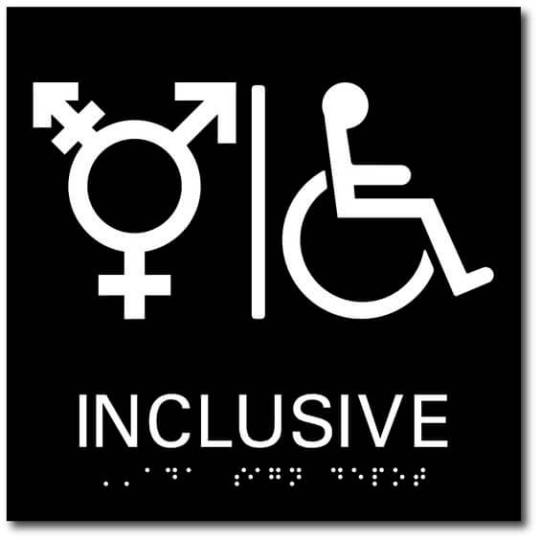
2. Monochrome Illustrations: The resurgent color schemes were popular in 2018 and the severity of interfaces was chosen by the product-based companies, emphasizing the elitism and high-quality nature of their product. This year we saw an increase of monochromatic color effect on pictures across the industry by various graphic designers, Following year Monochromatic illustration of simplified versions will emerge as a trend. 3. Custom Typography: No matter which industry you are in, Already the space is too cluttered with competition to grab your customer's attention. A custom approach to Typography will take a backseat yielding to expensive font licensing. In 2020 most of the global brands and SMBs will invest in custom typography to help them stand out in the crowd and at the same time save the expensive license fees. Just before designing the custom typography, make sure the typography strongly depicts your business and brand.
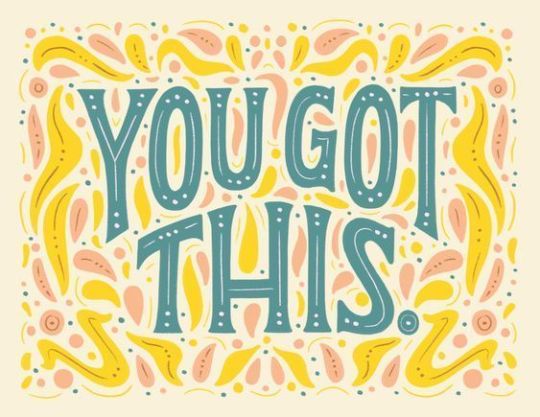
4. Textured 3D design: 2019 has seen the rise of 3D designs and certainly this trend will see upward usage in the coming years. The three-dimensional method is expected to advance by adding a layer of realism in textural experimentation. Textures are the flat images that are applied to a model to give it color and detail rather than them being blank and boring. In 2020, we will be seeing a way better three-dimensional graphic design composition.

5. Simplified Illustrations: When it comes to graphic designs, The simplified illustrations is a top choice as it gives a designer to incorporate ideas, concepts to communicate a message through illustrations in their designs in a very befitting manner. In 2020, we can expect to see more and more custom made and simplified illustrations to become one of the key ways brands communicate their identity. This design may look oversimplified and sketchy.
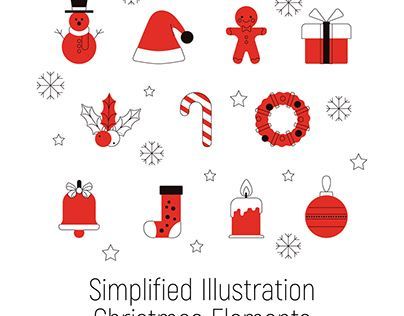
6. Geometric Designs: Geometric designs involve the representation of free form curves, surfaces or volumes and are related to Geometric modeling. Any designer (UX, Graphic, UI, Visual) will be able to relate the artwork created to basic geometric shapes. These basic shapes may look simple but require a lot of work in order to recreate composition that passes the right meaning to his observant. Since all the designers are aiming at simplicity in the designs, The year 2020 will be seen a lot of upward trends of geometric designs.

7. Realistic Textures: The patterns and textures dominated were faded into the background when flat design ruled the design word. After several years of ethereal gradients and impossibly smooth isometric objects dominating the world of design, Realistic textures are making a come back. With grains and contours that make anyone want to reach out and touch them, In 2020 the realistic texture trend will see a huge potential for experimental design.

Let the year 2020 be the best year yet by challenging yourself to incorporate trends masterfully. These design trends are super impressive and diverse, we will see some amazing designs crafted to perfection with typography, mesmerizing color combinations, line art, doodling, Liquid patterns in one design and many more design trends. If you are wondering what might have been the design trends of 2019, No problem we have article covered for you. Check it out by clicking on the hyperlink. What are your views on the web, digital, UX design trends of 2020? We would love to see what you think in the comments section! Read the full article
#2020designtrend#2020graphicdesigntrendsbehance#designgraphictrends2020#designthinkingtrends2020#designtrendsdigital#designtrendsexamples#designtrendsexplained#designtrendsfor2020#designtrendsforthenextdecade#designtrendsfuture#designtrendsinwebdesign#designtrendsthatareout#goodwebsitedesignpractices#goodwebsitedesigntips#graphicdesigntrendsbydecade#thedesigntrendsbangalore#websitedesignandtrends
0 notes
Text
The Top Six Good Website Design Examples

In our previous article, we have outlined what is a good experience along with giving reference to handpicked best websites illustrating the specific principles of good UX Design, from simplicity to gamification. In this article, we have compiled a list of top six good website design examples that would give you a first-hand experience.
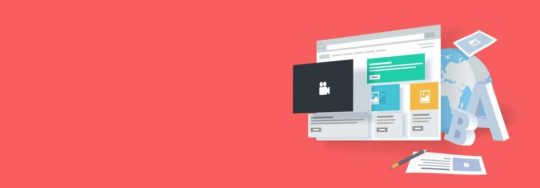
It was Albert Einstein who said; “If you can’t explain it, you don’t understand it well enough.” Though it is often misreported as being; “If you can’t explain it to a six-year-old, you don’t understand it well enough.” what Einstein was driving at was a particular application of “Keep it simple, stupid”. You know a good website when you see it. But what is it exactly that makes it so good? Whether it is design aesthetics, usability, interactivity, or a value that site provides, each one is a masterpiece that is inspired by in the specific industry. Below is the list, We found Top Six Good Website Design Examples whose designs are simple, unique and worth learning from. As you browse through the list, each website excels in its own way and seeks through serving its own purpose. While one site may be a great visual design, another website can be an excellent example of interactivity. This means not all the websites fit your industry, business that you can easily copy to your website. Rather, they’re a great way to gain some website design inspirations and see the cutting edge user experience that happens across the web industry.
Google: Powerful, Super Fast Since 1997
Fast loading has always been a priority for Google since its inception. Being fast and efficient helps users get what they want without waiting. The first thing we have to understand is that Google does not search the internet when a user submits the query but it searches its an index of the internet which makes the search infinitely faster. For example, when you hit the term “UX design” into Google search box, it returns about 600 million results in about 0.87 seconds which makes it efficient too.

Mailchimp: Humanizing Technology
Mailchimp gives their platform a face of a chimp, their mascot named Frederick von chimpenheimer IV or Freddie for short pops up throughout their web interface adding humor, emotional connection with their users which is one of the aspects of good user experience. This humanization of technology adds fun to the otherwise dull and boring experience of managing your email marketing campaigns. The Mailchimp becomes more like a team member and less like a marketing automation platform to get your email marketing done.

Duolingo: Tearing Down Roadblocks
Learning any new language is challenging and overwhelming too, Duolingo is a language learning platform that pours gamification into your learning. Its lessons adapt to your learning style, Exercises are tailored to help you learn and review vocabulary effectively. Contrary to its competitors which have a rough and rigid signup process by deciding on a plan, pay before actually getting started. Each of these steps adds friction to the users, causing users to drop out of the process.
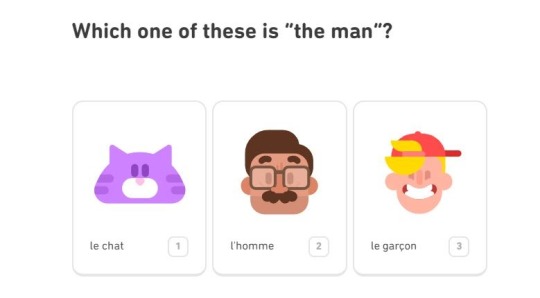
Airbnb: Holiday Lets, Homes, Experiences and Places
The user interface of Airbnb does two things exactly well: booking a place to stay and creating trust between two complete strangers. The home page makes it easy for the user to get started with the booking. The listing page is complete with a description of any additional fees that make it straightforward for any user. The “Request to book” button sits right under this, being one of the brightest buttons on the page, invites users to click in order to finalize their booking. Airbnb has clearly thought out its copy and used engaging photos and videos to ensure that the interface conveys an emotional tone that helps create a sense of trust between strangers.
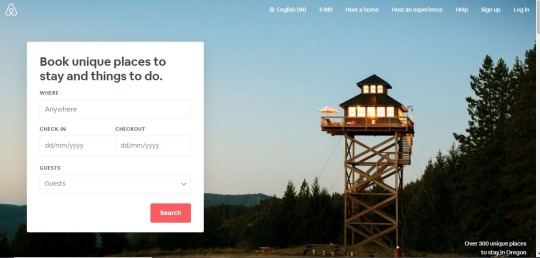
Dropbox: File storage and sharing are just the beginning
Dropbox has one of the most easily understandable interfaces by far, Having a file and folder organizational structure is easily recognizable for an average computer user. In terms of learnability, there is nothing too new to learn, it’s as easy as dragging and dropping files from your desktop to dropbox interface because of familiarity. Dropbox friendly personality, created by lighthearted illustrations, helps the user feel familiar while using it. There is so much attention to detail, sequenced with color palettes, animated icons and wonderful illustrations that it manages to come across experimental, creative and consistent. Check it out!
Zara: An ode to Hicks Law
A design principle that limits navigation choice and gives the user clear but restricted options. Zara’s website is a masterclass in simplicity, clean, intuitive and limited. The design idea behind it is that too many options will overwhelm your users. By offering fewer options, they feel confident and its navigation is also considered to be one of the best among eCommerce websites.
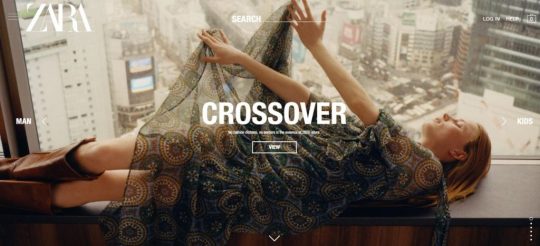
Conclusion: These are just a few of our favorite Good Website Design Examples. Creating a usable, frictionless UI is an essential part of creating a positive connection with a user. When designing or evaluating an interface, it’s best to refer to usability guidelines set forth by Nielsen in order to build a product that provides the best possible user experience. As per me a good example of a user experience website should imbibe all of the following characteristics. Should unify the experience Emphasize the contentDelivering a unique brand proposition Should be flexibleStreamline processes (by removing friction along the user’s path) Read the full article
#bestwebsitebydesign#bestwebsitedesignawards#bestwebsitedesignecommerce#bestwebsitedesignforhotel#bestwebsitedesignforitcompany#bestwebsitedesignideas#bestwebsitedesignintheworld#bestwebsitedesignminimalist#bestwebsitedesignnews#gooddesignofwebsite#goodwebsitedesignexamples#goodwebsitedesignexamples2020#goodwebsitedesignfeatures#goodwebsitedesignideas#goodwebsitedesignlayout
0 notes
Text
A Definitive Guide To User Experience

If you have started reading this guide, chances are that you have heard about the term UX and how UX plays an important role in your day to day life. Many of us have the misconception that user experience is all about making the aesthetics (Look and feel) of a website but that's not the case. There are also a few common myths surrounding user experience which will be unraveled in this UX guide.

ux guide Myths About User Experience UX design is all about the look and feel of the websiteUX design is a step in the process UXD is about the digital product UXD is about the user & usability After you have finished reading through our short UX guide, you will have a fair understanding of all of the covered topics and also the Myths surrounding UX are no longer myths but demystified knowledge points. What is the user experience? What does user experience design mean? What is good user experience?What is a user experience designer job? How do you create a good user experience?What are UX best practices?
Summary
UX Design is about enhancing customer satisfaction and loyalty by delivering a positive experience at all of the touch-points customer experiences while interacting with a company or a brand. UX Design Helps Your Business Grow Better Whether you are Healthcare, Ecommerce, Retail, shipping, Banking, Hospitality or any other niche, UX design can help you and your company grows. A happy customer is a key to success in any business, and without well-crafted UX design, this would be impossible to achieve. According to a study done by Forrester Research show that a well-designed user interface could raise a website’s conversion rate by up to 200%, and better UX design could yield conversion rate up to 400%. The metrics speak for themselves and with no further argument, it would be better to say UX should be integrated into everything your company does. Read the full article
#gooduserexperience#uiuxbasics#uiuxdesigntheory#userexperiencedefinition#userexperienceexamples#userexperiencegoals#userexperienceux#uxdesign#uxdesignconcepts#uxdesignhandbook#uxdesignonline#uxdesigntips#uxguide#uxprinciples
1 note
·
View note